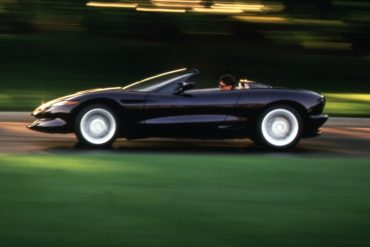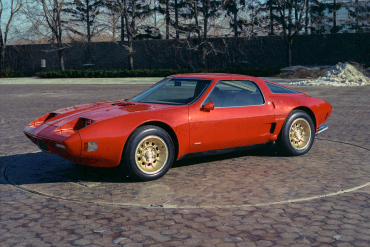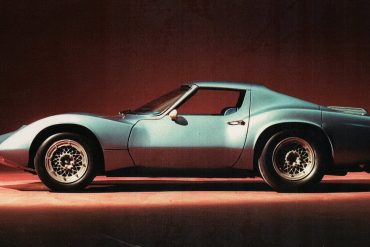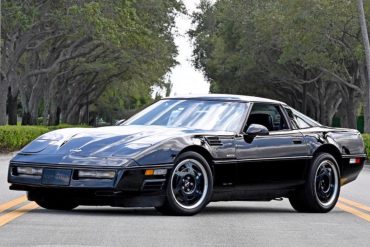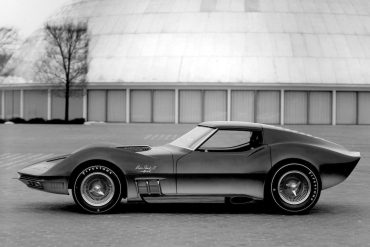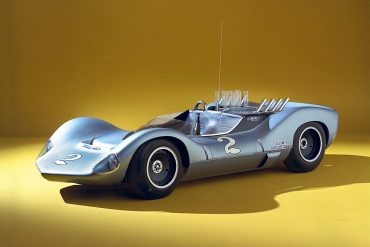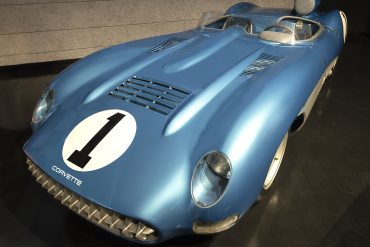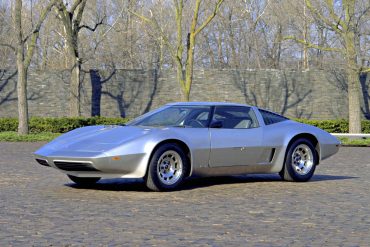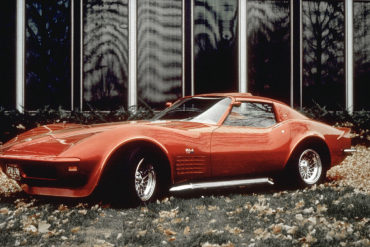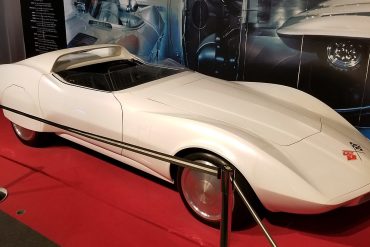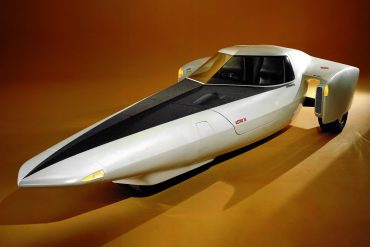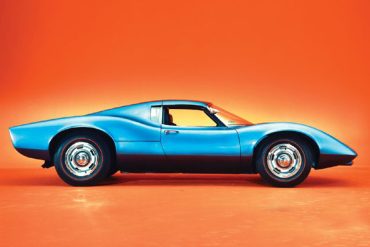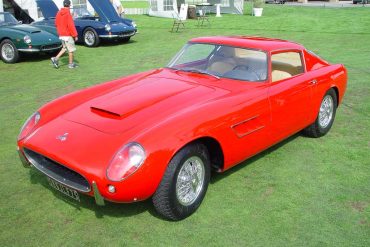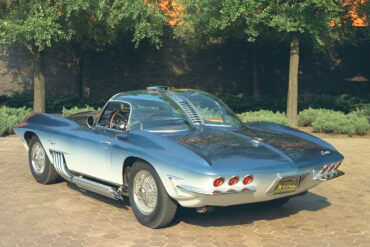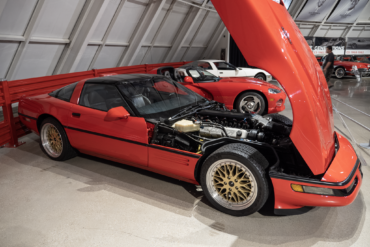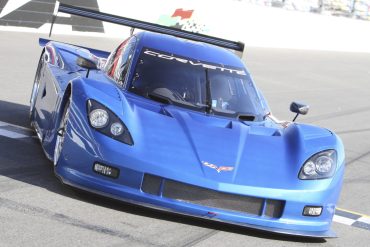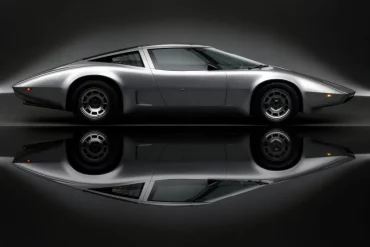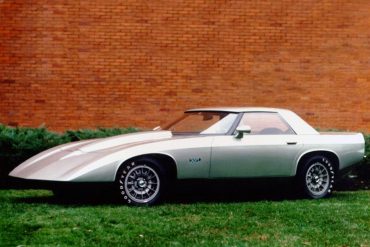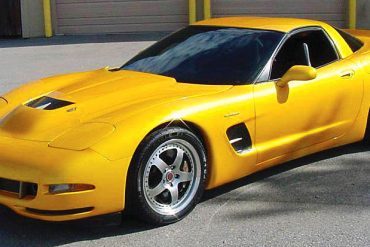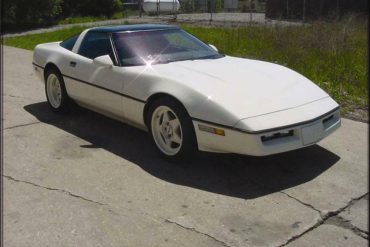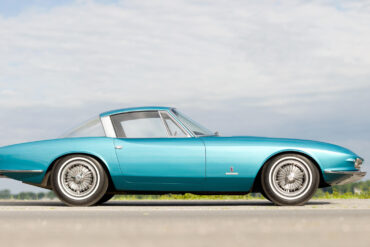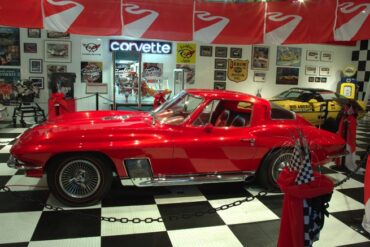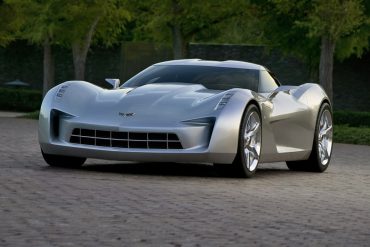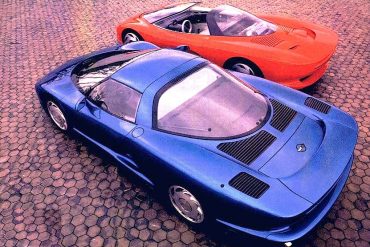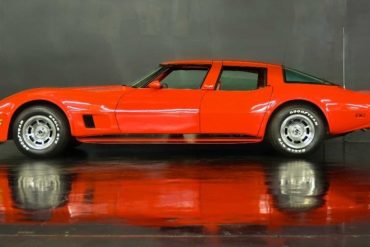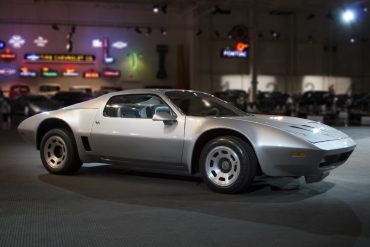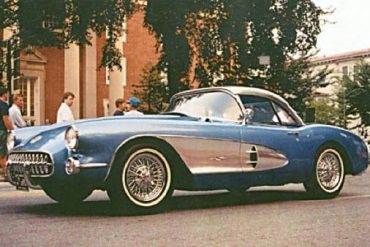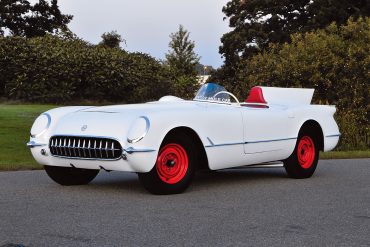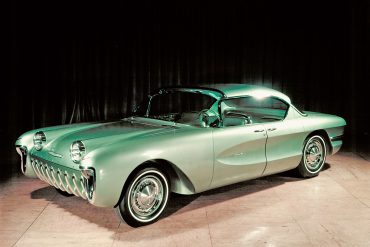The 1992 Stingray III / California Stingray Concept was developed by John Schinella (and team) at GM's Advance Concept Center in Los Angeles. The 1992 concept is a world away from the C4. But the dominant motifs of a smooth rounded Corvette did come to production on the C5. This prototype looks distinctly upmarket, the rear shares a shocking similarity to the Jaguar XK8, without a flat surface in sight.
This little concept mounted a 180-horse Wankel transversely, driving a new automatic transaxle being developed for the forthcoming X-body Citation. Designed by GM's Experimental Studio and built in 6 months on a modified Porsche 914 chassis by Pininfarina, the 2-Rotor made its debut at the 1973 Frankfurt show.
The Moray project, presented for the first time at the Geneva Motor Show on March 4, 2003, embodies the homage that Giorgetto and Fabrizio Giugiaro wish to pay to the fifty-year era of the Chevrolet Corvette, the supreme symbol of the American sports car. Touched by drifting tides with long and slender front lights, bringing immediately to mind the Moray, the English term for the eel-type fish, muraena helena, found in Mediterranean waters.
The XP-819, developed in the mid-1960s, was an engineering exercise to test a rear engine concept for the Corvette. The body was designed by Larry Shinoda. You can see styling cues in XP-819 that later appeared in Shinoda's famed "Sting Ray" design. A GM marine engine powers the car so the two-speed transaxle would operate properly. The entire chassis, suspension, and steering are custom made components unique to this car.
This vehicle pioneered the advantages of “Active Suspension” and had GTP Corvette race car technology. Built at the Bowling Green Plant, this vehicle was developed as a prototype for a limited edition run in the 1990 model year. Chevrolet ordered it to be built with a complex, high-tech active suspension that includes an Eaton hydraulic pump and Moog actuators. This car and the technology inside of it led to the Active Handling system GM released in 1996.
The Mako Shark II was a radical concept that shaped Stingray years later. While showcasing distinct design cues, the Mako Shark contained many notable features for 1965. It had a one-piece front-end that hinged forward for access to the engine bay, a removable hardtop, knock-off aluminum wheels and a big-block 427. Chevrolet received overwhelming requests to have it produced.
The GS II (Grand Sport II) was a test vehicle completed in late 1963 by Chevrolet Engineering Center (C.E.C.). The chassis was constructed of spot-welded sheet steel and was fitted with narrow tires. With only minor testing done at GM’s test facility in Michigan, the vehicle was shipped to Texas to the Chaparral Cars test facility.
To commemorate the launch of the definitive book on "Corvette Concept Cars," we proudly present our picks of the ten greatest Corvette concepts of all time!
One of the most beautiful concept cars created by GM was the XP-822 later called the Aerovette. Zora Arkus Duntov and his engineers had originally built two predecessors during 1969. John DeLorean, Chevrolet's general manager, felt the program was too expensive and canceled the car.
Only Bill Mitchell could get away with this. Bill always managed to have a hot daily ride. Engineering prototypes that weren't street-legal stayed behind the fence, but many of the show car Corvettes managed to go home with Bill. His usual statement on his "design study" cars was, "This thing runs like a bear!" For the Mulsanne Bill added, "This is the best Stingray ever."
The Astro II was one of the most significant case studies of Duntov’s outright refusal to let his mid-engine dreams die, and as such, ultimately entered the history books as a precursor to the eventual mid-engine, C8 Corvettes of today. The Astro II was designed in a way that was more representative of the Corvette’s typical styling cues, than that of The Astro I.
Though the first two prototype cars to carry the Astro namesake were relatively well known, the third entry in this conceptual saga was somewhat obscure and significantly more bizarre. At the 1969 Chicago Motor Show, Chevrolet unveiled the Astro III which was a gas-turbine prototype that featured a tricycle wheel arrangement.
The Astro II was one of the most significant case studies of Duntov’s outright refusal to let his mid-engine dreams die, and as such, ultimately entered the history books as a precursor to the eventual mid-engine, C8 Corvettes of today. The Astro II was designed in a way that was more representative of the Corvette’s typical styling cues, than that of The Astro I.
When the crankshaft broke on Gary Laughlin’s Ferrari Monza he had had enough. Being the owner of several Chevrolet dealers, he turned to Peter Coltrin to have a few rebodied. Fortunately, they pursued Sergio Scaglietti who made three fastback coupes on the Corvette chassis.
The XP-755 was designed and the prototype was built in the beginning of 1961. Bill Mitchell was very excited about the double-bubble roof, the side exhausts and rear. It is equipped with a single four-barrel carburetor that produces upwards of 425 horsepower. The Corvette XP-755 Concept had a streamlined design, pointed snout and outlandishly future looking elements everywhere. The 1961 Mako Shark I (XP-755) was an early concept.
The Corvette team decided to one-up the Viper with four extra cylinders, they decided on one of Ryan Falconer’s stunning, all aluminum, 600-cubic-inch, 683hp, 680 lb-ft V-12 racing engines. The biggest challenge was the fact that the all-aluminum V-12 engine was 8.8-inches longer than the production Corvette engine. So the front end of the ZR-1 would have to be stretched 8 inches. This test car was named Conan, after his raw, beastlike charisma.
For the 2012 Grand-Am season, Chevrolet was the first to unveil it's new DPG3 bodywork. This Corvette body kit will be built by Pratt & Miller and will be sold to customer teams. These body kits will fit on any existing Coyote, Riley, or Dallara chassis. This Corvette DP will be powered by a 5.0L V8 making 530BHP @ 7,000rpms and 450ft-lbs at 5,500rpms.
In 1977, GM chairman Thomas Murphy gave the Aero-vette the green light. It was approved for production, and slated to be released in 1980. Despite being greenlit for 1980 production as the upcoming C4 Corvette, Arkus-Duntov's replacement Dave McLellan decided for a number of reasons (cost and tradition among them) to stick with the Corvette's tried and true front-engine configuration
The 1973 Chevrolet XP-898 concept car was built with a frameless fiberglass foam sandwich body and chassis. This two-seater sports coupe offered a unique look at alternative engineering approaches to future techniques in design and manufacturing. The entire body consisted of four lightweight fiberglass outer body panels.
Chevrolet Corvette “Tiger Shark” Concept, 1997. A C5 Corvette powered by an alloy 742hp LS1 427ci supercharged V8. Other modifications included upgraded Brembo brakes, 18-inch Kinesis Motorsport K58 forged wheels and a hood dome to clear the supercharger. It was built by Detroit prototype shop Wheel-To-Wheel and sold for $112,200 in 2009 at the GM Heritage car auction.
In the late 80s, Chevy was developing what some dubbed a ‘Super Vette.’ But the 1989 debut of the Dodge Viper sent GM engineers on a new path to develop a ‘Viper-Killer.’ It started with a factory test mule and the experiment was to see how a ZR-1 would perform if given more power and less weight. It was so fast it was called "Snake Skinnner", for it's ability to beat the Viper and Cobra.
The Corvette Rondine concept was built by Pinanfarina and introduced at the 1963 Paris Motor Show. The car started life as a 1963 split-window Corvette, which is all the more unusual because Chevrolet introduced the split-window coupe at the same time that Pinanfarina was introducing a custom-built Corvette based on that very same platform.
For the 1964 New York World's Fair, Bill Mitchell and his Styling team at the Tech Center customized a production Sting Ray under Shop Order #10361 with a variety of items that transformed the already impressive Corvette into a showpiece like no other. An opening was cut into the center of the car's hood exposing a polished fuel injection manifold with the Corvette crossed flags in its very center.
SIDESWIPE takes the form of a sleek, vision concept dreamed up by the Corvette designers at GM. The design is influenced by the original Stingray race car, introduced in 1959, but also draws on Corvette heritage cues from other generations. It brings them together in a futuristic shape that seems to be equal parts racecar and space ship.
While it was understood that the Corvette Indy Concept would never be fully realized as a production vehicle, it paved the way for the creation of the twin-turbo CERV III. The CERV III (Chevrolet Engineering Research Vehicle No. 3) was introduced in January, 1990 at the International Auto Show in Detroit, Michigan. Like the latter iteration of the Corvette Indy Concept car, the CERV III was fitted with a 5.7 Liter, 32-valve, dual-overhead cam LT5 engine that featured twin turbochargers. It had 650 hp and 655 lb/ft of torque and top speed of 225 mph.
Chevrolet had actually planned on making a family minded sports car at a rate of 40 per year, and to call it "Corvette America." It was designed by California Custom Coach in Pasadena. The one prototype and five production cars that were assembled were built by cutting two cars in half which, when mated together, extended the wheelbase of the vehicle by 30 inches.
The XP-895 was one in a series of experimental Corvettes built to explore alternative engine placements and chassis layouts. This vehicle features an 400 cid small block V8 mounted transversely in a mid-engine position. It utilizes a Turbo Hydramatic transmission via a bevel gear box. The body panels are all aluminum.
If you were a senior GM employee, one of the perks was being able to have your own custom built for you. Bill Mitchell was known for it, but this SR-2 Lookalike was built for GM president Harlow Curtis, who was president of GM during the period that the SR-2 were developed. The lookalike was built by GM’s styling staff and presented to him.
Built for outright top speed, this prototype Corvette was built by Zora Duntov. He successfully piloted the car to a two-way average speed of 150 mph in January of 1956 at Daytona. Later two more similar cars were built for the 1956 Daytona Speed Weeks in February. After initial resistance from Engineering, Duntov’s cam was delivered to the Proving Ground.
GM’s 1950s Motorama-mobiles were mostly pretty out-there, with flamboyant fins, rocket-inspired skegs and cockpits, and other flights of wild imagination. Frankly, many of them were a bit absurd and even childish. But there were a few that were somewhat down to earth, even rather brilliant, like this 1955 Chevrolet Biscayne.


